Ring-Necked Parakeets – the UK’s Only Wild Species of Parrot
Parakeets are a popular pet bird in the UK. This is unsurprising as they are highly intelligent and are great mimics, making them fun companions to have around. They also come in a host of different varieties and colours, meaning there is a Parakeet to suit almost any aviculturist.
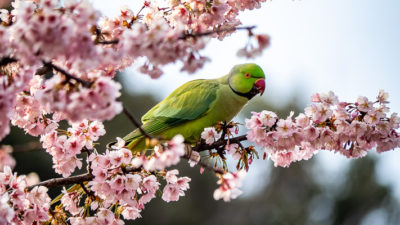
But did you know that the UK has its own population of wild Parakeets? Yes, that’s right, a wild parrot in Britain and one that is growing in population. In this blog, we take a closer look at the fascinating Ring-Necked Parakeet.
Wild Parrots? In Britain?
So, the first question comes to mind is how has a population of wild Parrots established itself here?
Well, there’s an interesting story or two about that!
One of the most famous tales about how a wild Ring-Necked Parakeet population developed is that legendary rock and blues guitarist Jimi Hendrix released two of them in London’s Carnaby Street in the swinging sixties, and these became foundation stock of the population.
Another story is that a number of birds were deliberately released at the wrap party for the film The African Queen, which took place in Isleworth in 1951.
Yet others involve a plane crash into an aviary, which freed the birds inside, and the even more bizarre claim that burglars released Ring-Necked Parakeets from George Michael’s home during break in.
However, there is little evidence for any of these stories and they’re unlikely to be true.
Whereas there certainly have been some deliberate releases – particularly in response to sensational media coverage of human deaths from psittacosis, the so-called ‘parrot fever’, in the 1950s – most experts believe the population became established in the 1970s as a result of successive escapee birds. Later events such as the great storm of 1987, which damaged many outdoor aviaries, bolstered these numbers.
How Many Ring-Necked Parakeets are there in the UK?
It is commonly believed that Ring-Necked Parakeets first bred in the wild in the UK in 1969 in Kent. The species then began to grow at a fast rate making it difficult to give precise numbers as to how many there are now, or how far they have spread.
According to figures by the RSPB, the population in London in 2007 was around 30,000 with a forecast for that to rise to 50,000 by 2010*. However, the Parrot Society reported a 2015 survey that suggested there were around 31,000 birds living wild in the UK.
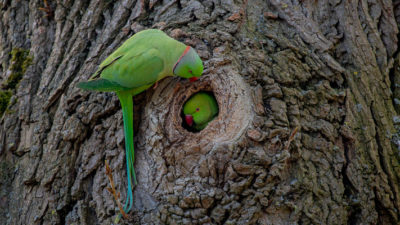
So, there seems little consensus on the size of the wild flock.
What is known, though, is that the largest population is in London and the Home Counties, with smaller populations having been reported in central regions, the West Midlands, Lincolnshire, and as far north as Lancashire.
There have been other sightings outside of these areas, too. In fact there have been sightings across almost all areas of the country, from Wales to East Anglia and up through Northumberland and into Scotland. But these are likely to be the result of local escapees rather than the existing wild population colonising these areas, most experts believe.
How do Ring-Necked Parakeets Survive in the UK?
Wild Ring-Necked Parakeets naturally inhabit warm, tropical regions of the world. So, how is it they seem to survive – thrive even – in the UK, when we have miserable winters and frankly, not much better summers, recent years excepted!
Well, although this is the case – Ring-Necked Parakeets are found in hot regions – they actually originate from the foothills of the Himalayas where it is very cold.
So, they’re not strangers to cold weather after all.
They also behave in a way to maximise their survival chances in this country. Ring-Necked Parakeets seek out areas that offer plenty of protection from the weather and a reliable food source such as suburban parks and gardens, and orchids.
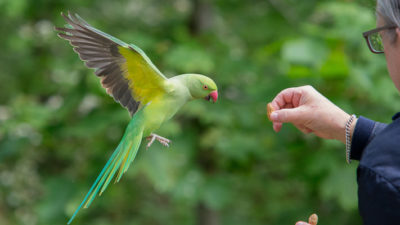
They are fairly adaptable feeders and will eat a variety of foods available to them, including household scraps and even meat. However, their standard diet includes seeds, fruits and nuts which provide the protein, fat, carbohydrates and trace elements they need for good health.
What do Ring-Necked Parakeets Look Like?
Ring-Necked Parakeets are medium sized birds, usually standing between 38cm and 42cm tall. They have a wing span of between 42cm and 48cm.
The original wild Ring-Necked Parakeet is green but since being domesticated, multiple colour mutations, such as blue, red, purple, grey, white, and yellow have been introduced.
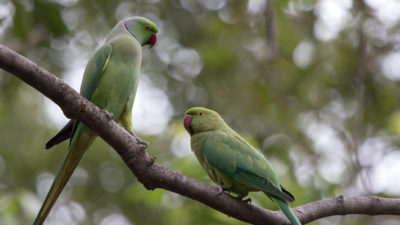
Males sport a red and black neck ring, hence the bird’s name, whereas females and juveniles only show a faint, shadow-like ring.
Ring-Necked Parakeets have a typical parrot beak, which is red, medium length, hooked, and with a powerful bite capable of cracking nuts.
How Do I Attract Ring-Necked Parakeets to My Garden?
Wild Ring-Necked Parakeets are beautiful, striking, and different to almost every other wild bird species in the UK. So, it’s no surprise people want to attract them to their gardens.
Whether or not you can actually achieve this will depend on where you live. If you live in the South East of England, you’ll have a much higher chance of attracting them than anywhere else in the country. But even if you don’t, putting food out that Ring-Necked Parakeets like will attract other species which are equally worth seeing. And you never know, you might one day get this exotic visitor to your feeders, particularly in winter when natural food is scarce.
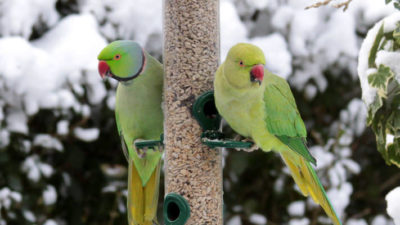
As mentioned, Ring-Necked Parakeets love seeds, fruits, nuts, and they will also eat grain, and berries. So, putting these on bird tables will give you the best chance of pulling them in. Although they will take meat if nothing else is available, it is not a good idea to deliberately try to feed this.
Of course, if you want to feed a nutritionally balanced diet, our Premium Fruity Parakeet and Cockatiel and Big Parakeet blends will be absolutely perfect as they are specifically produced with Parakeets in mind.
As with all other birds, put fresh water out each day and ensure feeders are located away from trees or shrubs to avoid the risk of predators being able to reach them.
By doing this, you will increase your chances of seeing wild Ring-Necked Parakeets in your garden, but if you live outside of the South East, don’t be too disappointed if they don’t turn up.
Non-Native Species
Although Ring-Necked Parakeets are an exotic and beautiful sight in the wild, they’re not loved by everyone. Many people regard them as a non-native, invasive species that out compete native bird populations when it comes to food and nesting sites.
This is exacerbated by the fact they are a long-lived species, living up to 30 years in the wild, yet they reach sexual maturity early so have many young. They also have no natural predators and can be vocal and aggressive to other birds.
But love them or hate them, you can’t deny there is something wonderful about having a wild population of this exotic bird in the UK. And as it spreads further beyond its stronghold in the South East, it is likely to soon become a common sight over the length and breadth of the country, further adding to the wonderful bird life of Britain.
Our recent posts giving advice and guidance on parrots & parakeets
Ahoy the Mighty Macaws – the Pirate’s Favourite!
Reading Time: 15 minutes Mention the word parrot and the first thing many people think of is a Macaw. Sat abreast many a pirate’s shoulder in books, TV, films and cartoons, these colourful, long-tailed birds are big, beautiful, instantly recognisable as the archetypal parrot, and always happy to take a tasty treat from their owner.
Johnston & Jeff Appointed as Exclusive Distributor of Innovative New Pelleted Bird Food
Reading Time: 6 minutes We are very excited to have been appointed as the exclusive UK distributor for an innovative new pelleted bird feed. Italian manufacturer Fiory has created a cold pressed pellet range called Micropills, suitable for parrots and parakeets, and has signed an exclusive deal with us to sell it in the UK.
Ring-Necked Parakeets – the UK’s Only Wild Species of Parrot
Reading Time: 8 minutes Did you know that the UK has its own population of wild Parakeets? Yes, that’s right, a wild parrot in Britain and one that is growing in population. In this blog, we take a closer look at the fascinating Ring-Necked Parakeet.










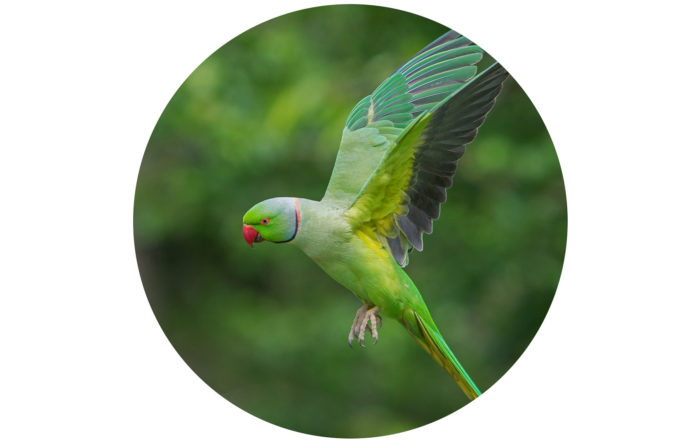
Leave A Comment